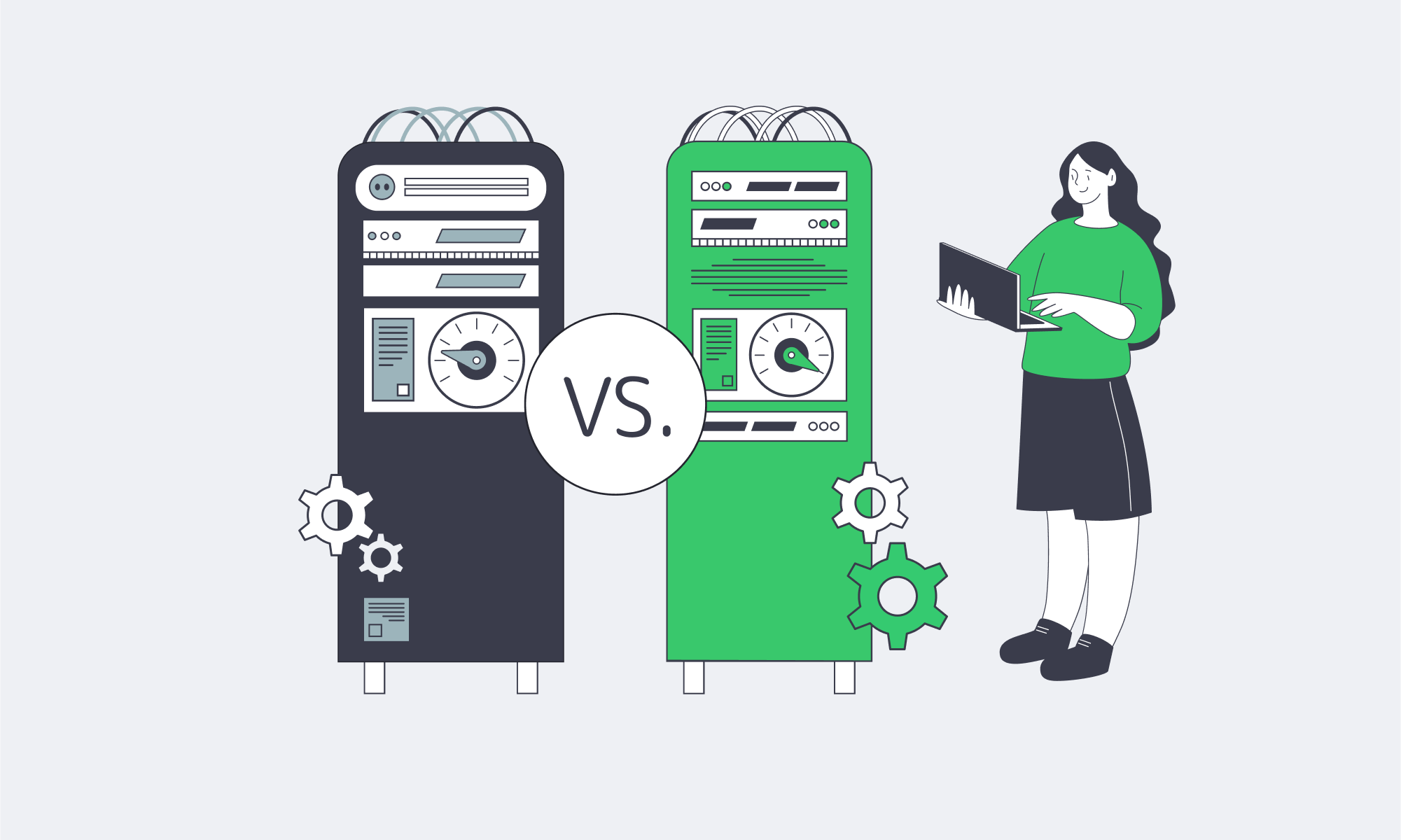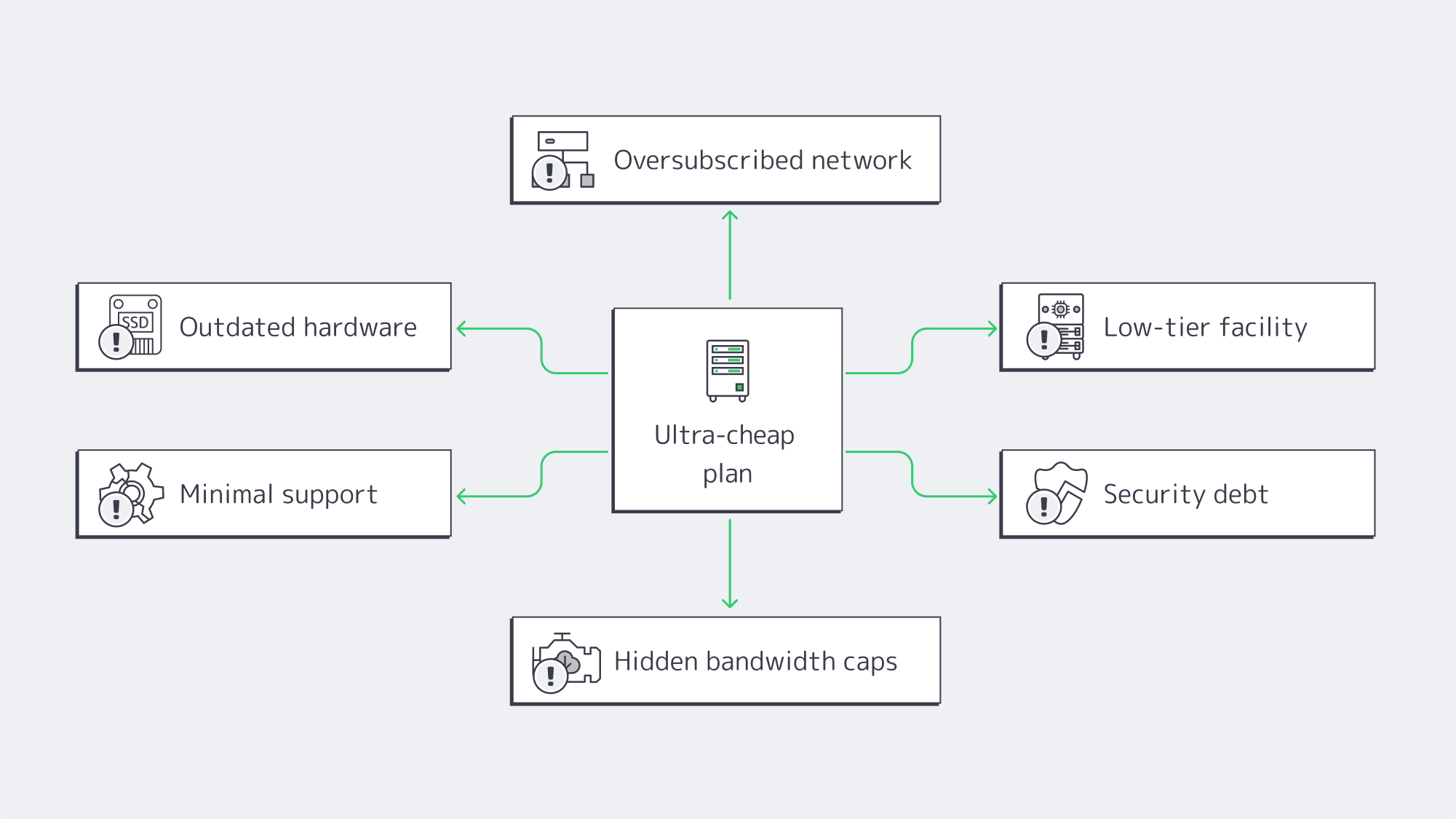Blog

Cheap Dedicated Servers in Singapore: The Hidden Costs of Going Low-End
Ultra-cheap dedicated servers in Singapore promise a shortcut to regional presence: low monthly fees, local IPs, and the cachet of hosting in one of the world’s best-connected hubs. But the economics of Singapore’s high-cost, high-quality data center market are unforgiving. When a plan looks improbably cheap, the discount is usually paid back later—in performance bottlenecks, outages, throttled bandwidth, or slow support at the worst possible moment. For budget-conscious startups and small businesses, the question isn’t “How low can I go?” It’s “What hidden costs am I taking on, and how quickly could they erase my savings?”
Choose Melbicom— 130+ ready-to-go servers in SG — Tier III-certified SG data center — 50+ PoP CDN across 6 continents |
 |
Why Are Cheap Singapore Dedicated Servers so Tempting?
Singapore combines political stability, world-class connectivity, and proximity to Southeast Asia’s fastest-growing internet markets. The data center sector is sizable and expanding at a steady clip, supported by dozens of submarine cables and dense regional peering. As capacity has grown, more “affordable” plans have appeared. The allure is obvious: a cheap dedicated server option in Asia with local latency and a familiar legal environment.
Yet Singapore is also one of the most expensive places to operate a facility—real estate, power, staffing, and compliance all carry premiums. When a plan’s price drops to the floor, corners get cut: older hardware, thinner networks, minimal staff, or a low-tier site. Those choices shift cost and risk to you.
Cheap Dedicated Servers in Singapore: What Hidden Costs Should You Expect?
- Outdated hardware → slow I/O, higher failure rates, painful concurrency ceilings.
- Oversubscribed networks → latency spikes, jitter, and packet loss at peak.
- Low-tier facilities → more incidents, longer repairs, avoidable power/cooling events.
- Thin support → long response times, prolonged outages, higher mean time to recovery.
- Security debt → unpatched systems, “bad-neighborhood” IPs, collateral damage.
- Fine-print bandwidth → throttling after a threshold, overage fees, hidden caps.
How does outdated hardware tax your revenue?
One hallmark of Singapore cheap dedicated server deals is retired or refurbished gear: legacy CPUs, HDDs instead of SSD/NVMe, and smaller memory footprints. Performance penalties show up in user behavior. Nearly half of users expect pages to load in ~2 seconds; by ~4 seconds, conversion rates can sink toward ~1%. Sluggish servers turn marketing spend into abandoned carts and churn. Older components also fail more often, multiplying incidents. Modern enterprise hardware (current-gen CPUs, ECC RAM, NVMe) isn’t just faster; it’s more predictable—critical when every outage dents brand trust.
We at Melbicom design configurations to avoid this trap. In Singapore, 130+ ready-to-go server configs let you dial in the right core counts, RAM, and storage tier without paying for capacity you don’t need—or getting stuck on gear that can’t keep up as traffic climbs.
Why can a thin network easily erase Singapore’s latency advantage?
You pick Singapore to be close to users. Real-world differences are stark: think ~12 ms from Singapore to Jakarta versus ~69 ms if serving Jakarta from farther afield. But if a provider runs a lean backbone, limited peering, or oversubscribed uplinks, you’ll see congestion and circuitous routes. The result: a “local” server that sometimes behaves like it’s overseas.
Melbicom’s Singapore footprint is built to preserve the latency dividend: up to 200 Gbps per-server bandwidth and transparent port speeds, with the option to pair origin delivery with our CDN in 50+ locations for global offload. That combination keeps dynamic workloads snappy locally while cached assets ride a nearby edge.
What is the uptime risk with low-tier facilities?
Data center tiering isn’t marketing polish; it’s engineering intent. A Tier III-certified site is designed for ~99.982% availability—roughly 1.6 hours of annual downtime under design assumptions. Cut-rate plans are often hosted in facilities that don’t reach that standard, inviting power and cooling events that last longer and happen more often. In Singapore’s tight market (where colocation vacancy has been around ~1.4% in recent reporting), quality providers lock space in resilient buildings; bargain operators may not.
Downtime is where “cheap” turns expensive fast. Industry surveys routinely peg an hour of critical outage in the hundreds of thousands of dollars for many organizations, with some reporting single-hour losses well into the millions. Even at small scale, a few hours of missed orders, refunds, or customer churn can outstrip a year’s worth of savings from a low-end plan.
Melbicom’s servers in Singapore run in a Tier III-certified facility, precisely to minimize incident frequency and duration.
How do technical support gaps turn a discount into an emergency?
On paper, you can self-manage a server and save money. In practice, incidents arrive at impolite hours. Singapore’s dedicated server cheap offers often come with email-only queues, slow triage, or metered “priority” tickets. Each delay pushes your recovery further out—and your costs up. Many teams end up paying external consultants or burning internal cycles to fill the gap.
Melbicom includes free 24/7 technical support. When something happens at 3 AM, engineers are on the line. Lower mean time to recovery is a cost line many buyers overlook—until the first bad night.
Which security risks lurk in budget server deals?
Security debt accumulates when systems go unpatched, firmware lags, or abuse on the provider’s network isn’t policed. Land in a “bad neighborhood” IP range and your emails start hitting spam folders; share congested routes and your packets take the heat for someone else’s traffic. The average recovery cost for SMB cyber incidents routinely lands between $120,000 and $1.24 million once you tally response, restoration, and lost business. A bargain host with lax hygiene transfers that tail risk to you.
What bandwidth and scalability limits trigger surprise bills?
Beware the promise of dedicated servers in Singapore with unlimited bandwidth. In ultra-cheap plans, “unlimited” often hides fair-use clauses, throttles (e.g., dropping to 100 Mbps after a quota), or punitive overage fees. That’s fine—until your growth or a campaign succeeds. Then the meter spins.
Scalability is the second half of the fine print. Fixed, old-gen specs can’t be cleanly upgraded; you’re forced into forklift migrations just to add memory or move to faster storage. A few days of migration and testing can cost more than a year of “savings.”
Melbicom publishes real port speeds (from 1 Gbps up to 200 Gbps per server) and offers unmetered or high-allowance options with clear terms. If you need more headroom, we scale you in place—not with a disruptive move.
Which Infrastructure’s Hidden Costs Map to Which Business Symptoms?

Use this quick table to translate a suspiciously low price into likely trade-offs.
| Hidden cost lever | You notice it as | Business impact |
|---|---|---|
| Old CPUs / HDDs | Slow load times; poor concurrency | Lower conversions; higher churn |
| Oversubscribed uplinks | Peak-hour lag; jitter; packet loss | SLA breaches to your customers; bad UX |
| Low-tier facility | More (and longer) incidents | Lost revenue; reputational damage |
| Minimal support | Hours to first response; long MTTR | Missed sales; overtime and consulting costs |
| Security debt | Blacklisted IPs; compromise risk | Incident spend; compliance exposure |
| “Unlimited” with throttles | Sudden slowdowns; surprise fees | Growth penalty; budget volatility |
How Do You Balance Dedicated Server Hosting Cost and Reliability in Singapore?
If you only remember one framework, make it this:
- Start with the building, not the sticker. Require Tier III-level redundancy in Singapore. Anything less is a gamble you’ll eventually lose.
- Treat hardware as a revenue lever. Demand NVMe and current-gen CPUs; latency budgets and conversion rates depend on it.
- Audit the network, not the brochure. Ask for test IPs and route visibility. A cheap dedicated server Singapore plan that saves $30/month and costs 30 ms is not a bargain.
- Price MTTR into your TCO. Twenty minutes to reach an engineer vs. two hours changes the math.
- Read bandwidth terms like a contract. If “unlimited” has caveats, assume throttles or fees will show up exactly when you grow. Pair origin capacity with a CDN to offload global static assets.
This is why we favor value over gimmicks: modern hardware, real network headroom, resilient facilities, and human support that shows up. That combination outperforms bargain hunting over any reasonable planning horizon.
What Does a Pragmatic Shortlist Look Like?
When you evaluate Singapore dedicated server cheap offers, use these non-negotiables:
- Facility: Tier III certification, documented redundancy, clear maintenance processes.
- Network: Transparent port speeds; realistic options to move from 1 to 10 to 100–200 Gbps; peering that preserves Singapore’s latency advantage.
- Hardware: Fast NVMe storage as standard for transactional workloads; ECC memory; a choice of modern CPU families so you’re not overspending on extended core count—or starving for them.
- Support: True, in-house 24/7 availability. No pay-to-escalate gotchas.
- Bandwidth terms: Plain-English definitions of “unmetered,” thresholds, and overages. If you plan sustained high transfer, confirm it’s allowed—not merely tolerated.
- Growth path: Ability to add RAM, swap CPUs, or move to beefier configs without migrations. (We maintain 130+ Singapore configurations so you can right-size now and expand later.)
What’s the Bottom Line on Cheap Singapore Dedicated Servers?

Rock-bottom pricing in a high-cost market has to come from somewhere. In Singapore, it usually comes from old hardware, thin networks, lower-tier facilities, and threadbare support. Those choices externalize risk to you, and the bill arrives as missed revenue, higher recovery costs, and distracted teams. The latency dividend of hosting in Singapore is real; so are the penalties for undermining it with compromised infrastructure.
For buyers who need discipline on spend, the winning move is not “cheapest”; it’s credible value: modern gear, a strong network, resilient facilities, and responsive people. That mix keeps pages fast, incidents rare, and growth plans intact—so your infrastructure behaves like an asset, not a liability.
Ready for Reliable Singapore Servers?
Host where your users are without the performance compromises of bargain plans. Choose modern hardware, a strong network, and 24/7 expert support—at transparent prices.
